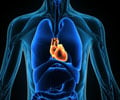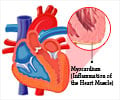University of Toronto researchers found childhood physical abuse is associated with significantly elevated rates of heart disease in adulthood.

The childhood abuse and heart disease link persisted even after controlling for health behaviours such as smoking, obesity and physical activity level, as well as other adverse childhood experiences such as parental addictions, adult income and education level, diabetes, self-reported stress and a history of high blood pressure and mood disorders.
These findings were based on data from a 2005 representative community survey conducted in two Canadian provinces. Of 13,000 respondents, seven per cent indicated they had been physically abused as children and four per cent reported they had been diagnosed with heart disease by a health professional.
Co-author John Frank, director of Scottish Collaboration for Public Health Research and Policy, notes, "This finding, if replicated in other studies, suggests that patients known to have experienced child abuse or neglect should have their cardiovascular risk factors managed somewhat more aggressively than other persons, since they are at greater risk."
Frank believes that future research is needed to study the potential mechanisms through which childhood physical abuse is associated with heart disease. "Like many previous studies linking early life characteristics and experiences with late life serious disease, this study does not explain precisely how such links operate, biologically; further research will be required to understand that process."
Advertisement














